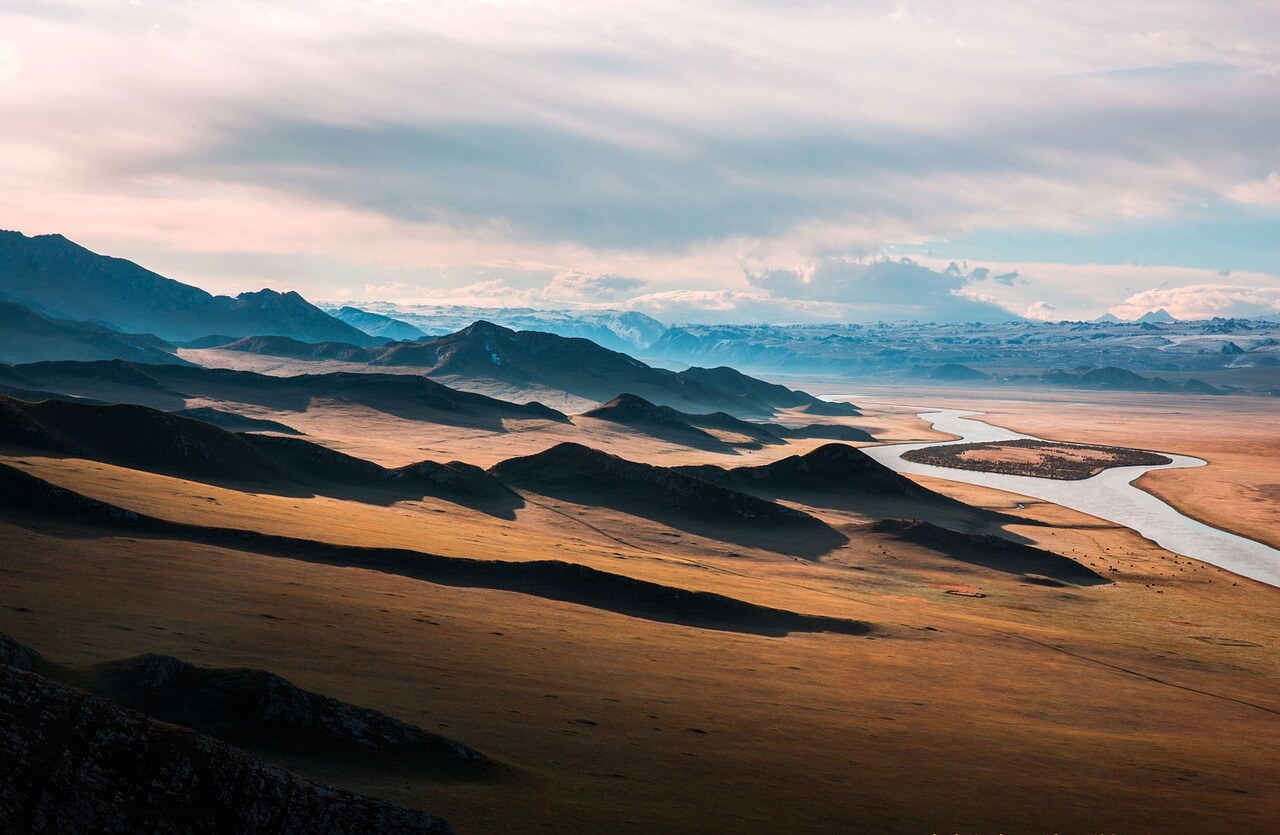Posted on Jun 21, 2017
12 Types of Travel Writing Every Writer Should Know
About the author
Reedsy's editorial team is a diverse group of industry experts devoted to helping authors write and publish beautiful books.
More about the Reedsy Editorial Team →Martin Cavannagh
Head of Content at Reedsy, Martin has spent over eight years helping writers turn their ambitions into reality. As a voice in the indie publishing space, he has written for a number of outlets and spoken at conferences, including the 2024 Writers Summit at the London Book Fair.
View profile →So, you want to be a travel writer?
There are plenty of reality doses out there already, so we’re going to focus on the positives, and what you can do to maximize your chances of travel writing professionally. One of the first steps: you should absolutely know your markets, and what types of travel writing are popular in them. In today’s competitive market, this knowledge can both help you structure your article and target the right audience.
In this post, we break down modern travel writing into three distinct categories: freelance journalism, blogging, and book writing. Then we identify the prevalent types of travel writing each category is known for, to give you an initial sort of compass in the industry.
Freelance Travel Journalism

The truth is this: the travel sections in major publications (New York Times, Washington Post, Wall Street Journal) are slimmer now, so competition will be tall. But there are other outlets. Local newspapers are sometimes open to travel pitches from freelancers. Certain websites pay for travel articles, while magazines can be great for targeting niche audiences.
So what are the common types of freelance travel journalism?
Destination articles
Here, the game’s in the name: destination articles tell readers about a place they might want to travel one day. One of the most standard type of travel stories, these pieces act as the armchair reader’s bird-eye view of a place. Useful or interesting facts pepper the writing. History, points of interest, natural scenery, trendy spots: a destination article can touch upon them all within the framework of a broad narrative.
Where the average article gives readers a sense of the destination, the best of the best convinces readers that this is a destination they want, nay, need to visit. As such, though some destination articles are written in first person, the focus is rarely on the writer. Instead, the destination is the star of the show.
For examples of destination articles, check out:
- Besalú, the most interesting Spanish village you probably don’t know (LA Times)
- In Indonesia (Washington Post)
- 36 Hours In The Finger Lakes Region of New York (New York Times)

Special-interest articles
Special-interest articles are offshoots of destination articles. Instead of taking the reader on a tour of an entire country or city, these pieces cover one particular aspect of the destination. This kind of writing can cover anything from art in Colombia, ghost towns in the U.S., trekking in Patagonia, alpaca farms in Australia, motorbiking in Brazil, railroads in France, volunteering in Tanzania — you get the gist.
Since special-interest articles are narrower in topic, many writers tailor them for niche magazines or websites. Before you start pitching, we recommend flipping through the Writer’s Handbook, one of the most useful guides to the freelance publishing market, to see which publications fit your target audience.
For a taste of some special-interest articles, see:
- Exploring Portugal — From Pork To Port (epicurious.com)
- This Unsung Corner of Spain is Home to Fabulous Food (Washington Post)
- Karsts of China's Getu River region attract rock climbers, other travelers (CNN Travel)
Holiday and special events
Holiday and special events travel articles ask writers to write about a destination before the event takes place. The biggest global events are magnets for this type of travel writing, such as the World Cup, the Olympics, the World Expo, fashion weeks, and film festivals. Depending on the publication, regional events work just as well.
Want to see what special events pieces look like? Have a read through these:
- This summer’s solar eclipse is southern Illinois’ chance to shine (Chicago Tribune)
- How To Plan A Trip To The 2016 Rio Olympics (Travel & Leisure)
Round-ups
You’ll recognize a round-up article when you see one, as it’ll go, “40 best beaches in West Europe,” or, perhaps, “20 of the greatest walks in the world!” It’s a classic tool in any magazine or newspaper writer’s toolbox, taking a bunch of destinations and grouping them all under one common thread.
Ultimately, a clear motif makes this type of article a breeze to read, as they’re a play on the ubiquitous List Format. But, OK, before you jump at this excuse to sacrifice your belly at 99 food trucks in New York City, remember that your premise should be original, not to mention practical. What’s tough is coming up with X ways to do Y in the first place, as that demands you put in the travel and research to produce a thorough write-up.

Want even more examples of round-up articles? Here you go:
- 12 new art exhibits to see this summer (Smithsonian)
- 21 ways to see America for cheap (Huffington Post)
- 41 places to go in 2011 (New York Times)
Personal essays
Publishers are experiencing something of a personal essay fatigue, so the market for more might be scarce these days. However, quality trumps all, and a good personal travel essay is just plain good writing in disguise: something that possesses a strong voice while showing insight, growth, and backstory.
Just don’t make it a diary entry. In an interview with The Atlantic, travel writer Paul Theroux said: “The main shortcut is to leave out boring things. People write about getting sick, they write about tummy trouble. They write about waiting. They write three pages about how long it took them to get a visa. I’m not interested in the boring parts. Everyone has tummy trouble. Everyone waits in line. I don’t want to hear about it.”
Here’s a jumping-off point for personal travel essays:
Op-eds
Have a burning opinion to share? Sometimes publications end up giving op-eds to staff, but there are always open calls for opinion pieces.
Travel op-eds are much rarer than political opinion pieces, but there’s a pattern to the ones that make the cut: good persuasive writing. If you can come at a topic from a unique angle (and argue your case clearly) then you may be able to publish your opinion.
If you’re in the mood for travel op-ed articles, see:
- The West Coast Is The Best Coast For Food In America (Food & Wine)
- Why Climate Change Is Actually Relevant To Travel (Conde Nast)
Travel Blogging

When typing “travel blog” into Google returns 295 million results, we can guess it’s a fairly competitive market.
Here’s the plus side: bloggers get to write what they want and go where they please. When it comes to blog posts, there are no editors, no gatekeepers. Only you and the “PUBLISH” button.
We won’t go revisit the types of travel writing we covered earlier (such as the roundup format). Instead, we’ll explore some of the other formats bloggers use to tell their travel stories. Since the rules of travel blogging are next to non-existent, our tally below is by no means definitive. And, again, our best advice is to note what your favorite bloggers do on their blogs.
Already running a successful travel blog? You might consider turning it into a full-length book!
How-To
How-to articles are already fairly popular in magazines, but they’re positively omnipresent in the travel blogging world. Blogs provide a direct communication platform, allowing trust to build up quicker with the readers. As a result, for the search query, “How to travel Europe on a budget,” six out of the top ten results are posts from trusted independent blogs.
A How-To article is the most standard form of advice column a travel blogger can produce. It’s intrinsically useful, promising that it’ll teach something by article’s end. A blogger’s challenge is delivering fully on that promise.
How to read more How-To articles? We got you covered:
- How To Start A Travel Blog (Nomadic Matt)
- How To Travel Solo To A Party Destination (Adventurous Kate)
- How to Visit Penang’s Kek Lok Si Temple (Migrationology)
Itineraries
Itineraries reveal the schedule that the writer took at a given destination, city-by-city or sight-by-sight. They’re meant for the traveler who’s embarking on a similar trip and needs a template. Typically, you’ll find that an itinerary post is an easy place for you to slip in recommendations, anything from the accommodation you used or the restaurants you tried.
You can use itinerary posts to reinforce your blog’s brand. For instance, an itinerary posted on a blog focused around budget travel will probably maximize cost-saving chances.
For more itineraries, see:
- My Trip To Japan (A Complete Japan Itinerary)
- Backpacking Vietnam on a budget: 2-3 Weeks Itinerary + Tips
Longform posts
Longform travel blogging tells a travel story through extended narrative content, as it takes a week’s worth of adventure and shapes it into a story. Longform blog posts about travel often end up being creative nonfiction: a way to present nonfiction — factually accurate prose about real people and events — in a compelling, vivid, dramatic manner.
Photography can add another dimension to the form, as Emmanuel Nataf (our co-founder!) shows on his travel blog. And Reedsy's very own Arielle provides a glimpse into why she prefers longform travel writing on her blog, Steps, a Travel Journal:
My favourite kinds of stories are the ones that give you a real sense of place. That’s why I enjoy longform travel blogging: I get to describe the character of a place through the experiences I encountered there.
If you want to dip your toe into the sea of longform posts, you can also read:
Books

When it comes to writing a book, you can take all the challenges about travel writing from above and magnify it times 2,000. If you’re asking readers to commit to you for more than 100 pages, you’d best make sure that your book is worth their while.
As far as examples go, travel writing’s boomed in the mainstream book market recently. But there’s much more to it than Eat, Pray, Love and its descendants.
Travelogues
In travelogues, authors record their adventures in a way that illustrates or sheds insight upon the place itself. Travelogues possess a storied past, from Lady Mary Wortley Montagu’s Turkish Embassy Letters in 1763 to Mark Twain’s 1867 The Innocents Abroad, which paved the way for the sort of comic travelogues that Bill Bryson’s perfected today.
Up for some travelogues? Check out:
- Notes From A Small Island, by Bill Bryson
- In Patagonia, by Bruce Chatwin
- Travels with Charley In Search of America, by John Steinbeck
Travel memoirs
Nowadays, travel memoirs are practically synonymous with Elizabeth Gilbert’s wildly popular Eat, Pray, Love and Cheryl Strayed’s bestselling Wild, both of which were recently adapted into Hollywood blockbusters.
That said, be aware that you’ll need a pretty exceptional personal story for your memoir to compete in today’s market. If you’re still set on writing or self-publishing a travel memoir, it’s tricky to balance personal backstory and travel for 400 pages, so think about taking on a professional for a second pair of eyes.
Did you know? You can find Nicki Richesin, a top Bloomsbury editor who’s edited for Cheryl Strayed, on our marketplace.
In addition to Eat, Pray, Love and Wild, you can read:
- Under the Tuscan Sun, by Frances Mayes
- Coasting, by Jonathan Raban
- Wind, Sand, and Stars, by Antoine de Saint-Exupéry
Guidebooks
As Oscar Wilde said, “I never travel without my diary. One should always keep something sensational to read in the train.” But these days, people are replacing diaries with travel guides — the ubiquitous Lonely Planet becoming one of the more common sights on transit.
Travel writing in guidebooks is straightforward, informative, and fact-filled. In addition, a certain amount of responsibility comes with the job. Lonely Planet alone is read by millions of travelers worldwide.
General Tips and Guidelines

As we mentioned before, the trick to producing great travel writing is ultimately simply writing well. To that extent, you should make sure to follow all the guidelines of good writing — not least, spell-checking your article before submitting or publishing it anywhere. You don’t want an editor or reader to see it while it stilll reads lik edis.
Also, keep in mind the tone, style, and vibe of the publication and platform (and by extension, your audience). A story about a moon-rock could go into a kid's magazine or it could go into Scientific America.
Finally, some category-specific tips:
- If you’re freelance writing, always check submission guidelines. Publications may accept only pitches or they may welcome articles “on spec” (pre-written articles). Some sources only take travel articles that were written within 6 months of the trip.
- If you’re blogging, brand your website (same advice if you’re an author who’s building a homepage).
- If you’re writing a book, get a professional editor! An unedited book is an unwieldy thing, and professional eyes provide direction, continuity, and assonance. (Layout designers can be important if you’re publishing a travel photography book, in the meanwhile.)
Travel writing isn't a cinch. In fact, it's a long and often hard grind. But by figuring out what type of travel writing you want to try your hand at, you're taking the crucial first step.









7 responses
Amanda Turner says:
20/03/2018 – 16:20
Thank you, this was very helpful. Here's one of mine: http://vagabondingwithkids.com/every-mothers-guide-to-piranha-fishing-in-the-amazon/
Travalerie says:
24/05/2018 – 18:42
I landed on this page Googling for one thing and coming up with another. Haha! But what I found instead was helpful as I'm devouring as much as I can on travel writing. A few months ago, I started a new travel business, revamped my website including a new blog, and am in the process of writing, writing, writing. I took 2 trips this year so far and wrote what seemed like a mini-novella. Burning out in the process. I know I can do better. But I had no idea what I was writing could be re-worked to fit a certain category of travel writing -- which is what I found helpful in this post above. Thanks https://www.travalerie.com/blog
Surya Thakur says:
04/03/2019 – 12:39
Very good information. Lucky me I discovered your blog by chance (stumbleupon). I’ve saved as a favorite for later! KuLLuHuLLs
David Bishop says:
08/05/2019 – 12:28
Thanks for this good article. I'm in my third year on the road and recently started my senior solo adventure travel website. I think my site has some pretty good stuff, of course. Take a look and tell me what you think. www.davidhunterbishop.com
Iris C. Permuy says:
23/05/2019 – 18:03
Thank you very much for all of these useful pieces of advice. I will make sure to implement them all on my travel blog, which is a combination of travel and gastronomy and uses the memoir and itinerary types, apart from recipes. Come check it out if you feel like it! I am more than open, eager for some professional feedback :)
Serissa says:
26/10/2019 – 14:53
This post is the perfect diving board for aspiring travel writers. I plan to link to this page from my travel blog if that is alright! ?? The link on my website will appear as "[title of this post] by Reedsy Blog". I assume this is alright, but if not, please email me directly to let me know! Thanks so much!
↪️ Martin Cavannagh replied:
29/10/2019 – 10:11
We'd be absolutely delighted if you shared this article on your blog :)